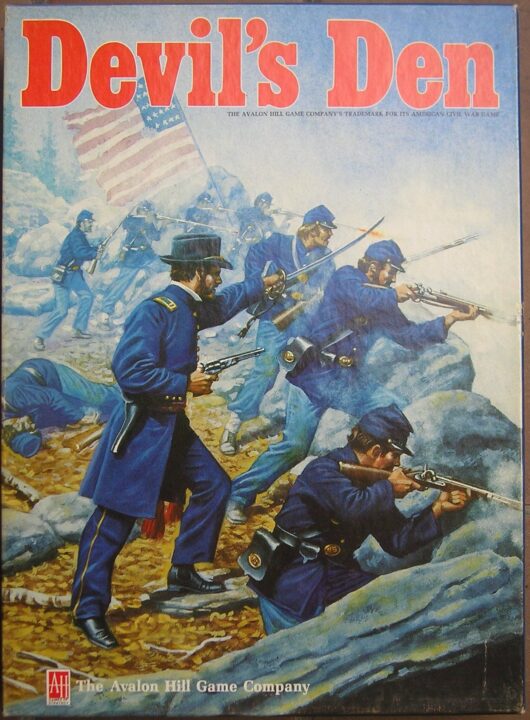Alright folks, get ready! Today I’m reviewing Devil’s Den, the board game that had my friends arguing over snacks, strategies, and suspicious dice rolls all night. If you like fair chances, sneaky backstabbing, and artwork that doesn’t look like it was drawn by my cousin after three sodas, you might want to check this one out—or maybe not, depending on your luck. Let’s see what the hype (and sometimes drama) is all about!
How It Plays
Setting Up
First, everyone gets their own set of colored pieces. Place the big board in the middle, shuffle and deal out role cards, and let everyone keep their cards secret (especially sneaky Uncle Dave). Pop the little wooden tokens on the starting spaces and make sure the dice are within reach. That’s it. You’re ready—unless your group argues about who sits where, like mine does every time.
Gameplay
Take turns moving your pieces, claiming territories, and plotting world domination, or at least victory over your friends. On your turn, you can move, attack, or scheme with your cards. There’s a bit of bluffing, a pinch of backstabbing, and—if your table is like mine—a lot of shouting. Dice get rolled during attacks, and special cards can change up the action. Just remember, trust no one. Especially that person smiling after you lost your territory.
Winning the Game
To win Devil’s Den, you need to meet your secret objective before anyone else does. Sometimes, all it takes is a big final move—or, if you’re me, a betrayal that makes your friends suspicious of you for future game nights. Watch the board, watch your friends, and never forget: the winner gets bragging rights and, in our house, the last slice of pizza.
Want to know more? Read our extensive strategy guide for Devil’s Den.
Game Balance and Fairness in Devil’s Den
If I had a dime for every time someone ruined a game because of unbalanced rules, I’d have enough to buy a new copy of Devil’s Den for every player at my last game night. So, when my friends cracked open Devil’s Den and read the rulebook, I braced myself for the usual cries of ‘That’s not fair!’ But, shockingly, things felt pretty even across the board.
Here’s the scoop: Devil’s Den manages to create an almost perfect line between the underdog and the overachiever at the table. The asymmetric sides—one controlling the defenders, the other the attackers—look scary at first. You might think, ‘Wait, am I just doomed because I drew this card?’ But, nope! After a couple rounds, we found the game lets anyone claw their way to victory if they play smart. It’s not flawless, though. The defenders have a slight edge when they bunker down, and it sometimes feels like they have more ways to win. But, if the attackers get bold (or lucky) with their moves, the balance tilts back.
One thing that helps: the rules don’t throw surprise events at you that ruin all your hard work. Every choice you make has a clear risk or reward, so nobody can complain when things go sideways because they gambled and lost. That’s fairness!
While Devil’s Den keeps the scale pretty even, you might still wonder: does luck play too big a role, or is it all about strategy? Sharpen your wits—I’m about to tackle that juicy debate next!
How Much Does Strategy Matter in Devil’s Den?
Let’s be honest, no one wants to lose a game because someone else rolled just a bit better. I learned that lesson the hard way when I played Devil’s Den for the first time. I had my strategy all set – flanking moves, feints, I even tried to look scary (it only scared my dog). But I soon found out Devil’s Den is more brains than blind luck. You actually get rewarded for planning, not just rolling dice and crossing your fingers.
Most of your choices in Devil’s Den matter. Your movement, when to attack, and how to use your units all require you to think a few steps ahead. Sure, there’s still a little bit of rolling – don’t we all love that tiny heart attack before a dice roll? – but the outcome depends more on how you play rather than lucky breaks. I’ve played with the sorest winner in my friend group (the kind who cackles when things go their way), and even they had to admit that their win was thanks to good moves, not the dice gods.
Now, if you’re like me and you’ve been burned by games where the winner is just the luckiest person, Devil’s Den is a breath of fresh air. There’s enough luck to keep things tense, but not enough to make you want to flip the table when your big plan gets ruined by a single unlucky roll. Strategy fans, you’re in good hands here.
But is the board itself as pretty as the gameplay is smart? Hang on to your meeples, because next up I’ll spill the beans on Devil’s Den’s component quality and artwork!
Devil’s Den: Quality You Can Actually Touch (and Maybe Stare At)
Let me start by saying: if you ever wanted a game that feels like holding a tiny version of the Battle of Gettysburg in your hands, Devil’s Den really delivers. The game tokens aren’t just cardboard squares; they’re chunky, sturdy, and have survived a direct hit from a spilled soda at my table. If my clumsy friend Gary can’t ruin them, nothing can.
The board itself is thick and actually stays flat, even after my cat tried to claim it as her personal nap zone. The printing pops, with clear colors and crisp lines that make it easy to track the action. Plus, the hexes are big enough even for my buddy Dave’s sausage fingers. No one likes knocking pieces over because the map is too cramped, right?
Now, about the artwork – it’s not “museum quality,” but it nails the vibe. There are enough gloomy forests and dramatic hills to make you feel the tension, but it never gets too busy or hard to read. I’d say it’s more “classic war-game chic” than “modern eye-candy,” but that fits the gritty theme to a tee.
The cards and player aids follow suit: simple, clear, and built to last. Only downside? The box insert is a bit of a wild mess. Components get mixed up after the first game, so maybe keep some zip bags handy unless you enjoy the sound of tiny tokens rattling in the night.
Now strap in, because next we explore if Devil’s Den keeps sucking us back in for more—with a look at replay value and all the wild things that happen when your friends get involved!
High Replay Value and Lively Player Interaction in Devil’s Den
So, you want to know if Devil’s Den will get old faster than my Uncle Jim’s knock-knock jokes? Good news! It keeps things fresh every game night. Thanks to different setup layouts and variable action options, no session feels quite the same. My friends and I found ourselves saying, “Just one more,” way more than our sleep schedules liked.
One moment, you’re plotting with someone to stop the rampaging defenders, then, oops—betrayal! Trust me, Devil’s Den dishes up more backstabbing than a soap opera. The player interaction is spicy. Everyone has to watch each other’s moves like hawks, and open negotiation is always on the table. If you curse at your buddies and laugh five minutes later, you’re playing it right.
Another thing I noticed: no player gets left behind doing nothing. Even if your plans crash harder than my attempt at yoga, there’s always a way to bounce back. You’re rarely just waiting for turns to pass. The table talk is non-stop, sometimes even louder than my cousin’s wedding DJ. If you love games where it’s you versus your friends, with plenty of options and surprises, Devil’s Den will hit the spot.
Would I recommend this game? Absolutely! Unless you hate fun, chaos, or people talking too much. For groups who love intense showdowns and endless replay value, Devil’s Den is a devilishly good time. Just watch your back!
Conclusion
Alright, that’s my wild ride with Devil’s Den all wrapped up! After a bunch of games (and several snacks lost to my friends), I can say this one is a keeper for most board game nights. It’s fair, it’s mostly skill over luck, and the art fits like a glove. Sure, the box insert could use a personal trainer, and defenders get a smidge more help, but it still feels pretty good overall. If you and your pals like a splash of betrayal, tense choices, and yelling about who messed up the fortress, give Devil’s Den a spin. I had a blast. This concludes my review — now go play games, not just read about them!


